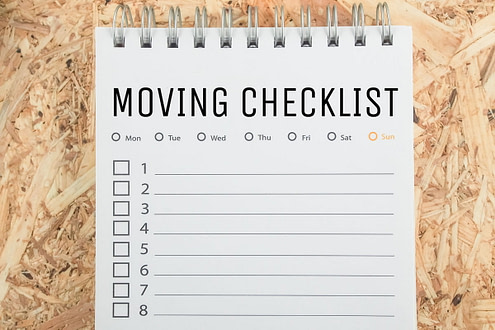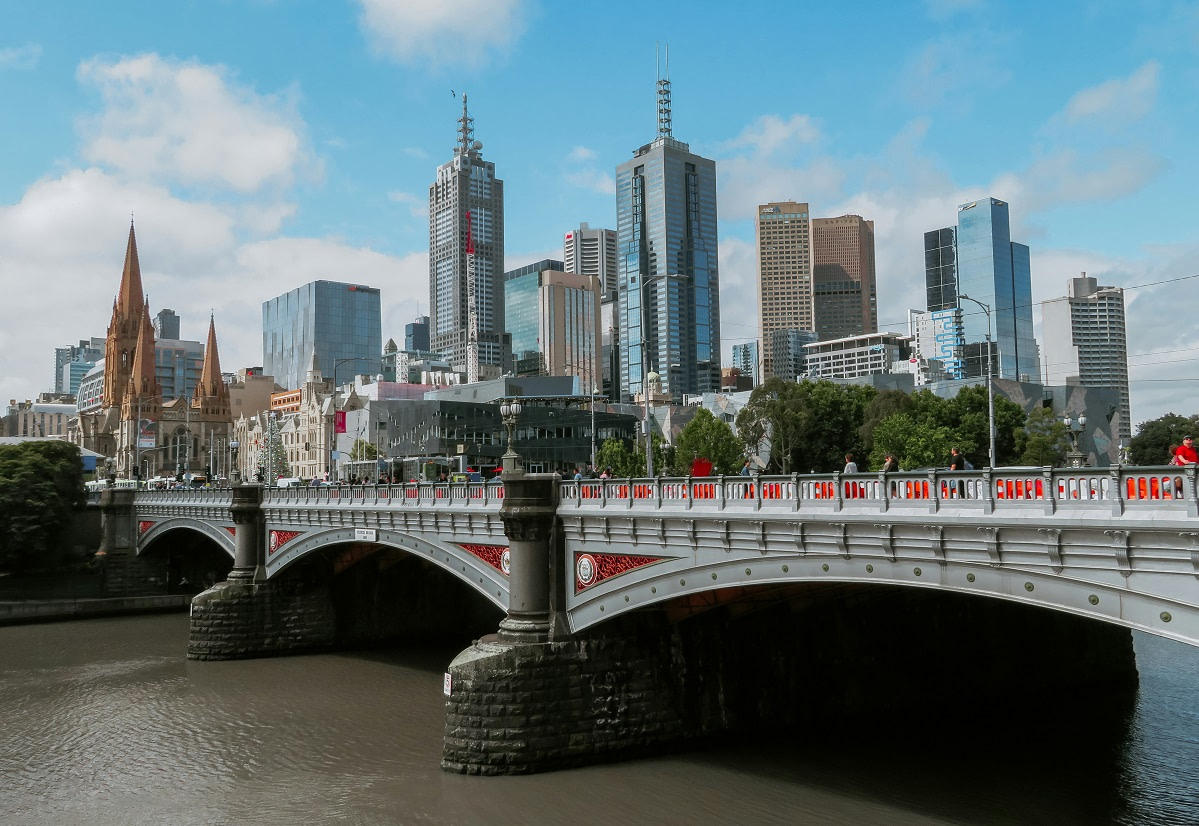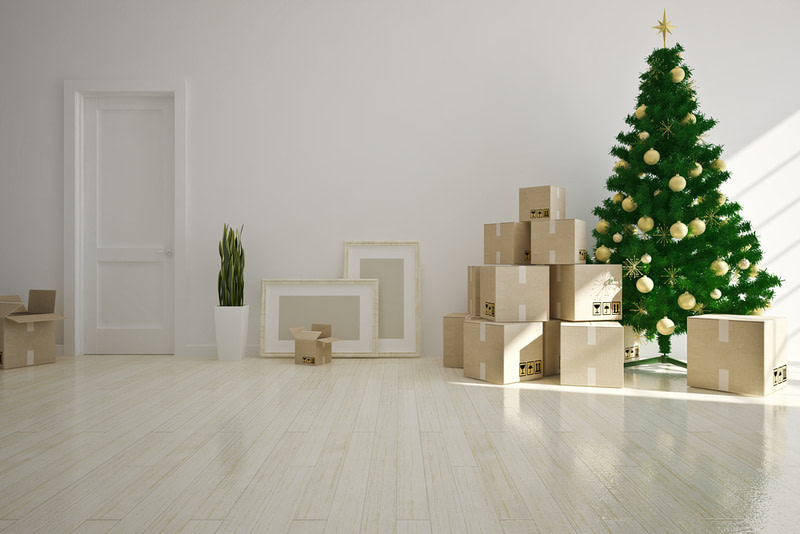Last Updated on June 1, 2023 by Vlad Stoikovich
You’ve lived in the inner city forever and loved every minute of it. But you’ve just bought your dream home in the suburbs. Time to pack up and move!
Between celebrating your new home and buying new furniture, how the heck are you supposed to keep all your moving to-dos straight?
Moving your house or apartment certainly has its ups and downs. But during this exciting (albeit stressful!) time in your life, we want to make things easier for you. We have something that can help set you up for a smooth, drama-free moving experience: a moving checklist.
So if you’re repeatedly asking yourself “what are the things you need to do when moving house?”, you’ve come to the right place.
Let’s get packing!
1. Research Moving Companies
You’re about to ask some random strangers to come into your house and touch all your stuff, so it’s probably a good idea that you find a removalist company you can trust. Unfortunately, it isn’t as easy as it sounds.
But we’ve got some tips for you. First and foremost, rely on your network by asking friends, family, or work colleagues for recommendations. Your friends are (hopefully) not trying to sell you anything. That means they can be a great resource to help you find a removalist you can trust.
And if that’s not an option?
Time to turn to a different sort of friend: Google. Doing some online research turns up company reviews that can help you learn about the quality of services local removalists provide to their customers.
Before ticking this item off your moving house checklist though, make sure you’re not just looking at overall star ratings.
Some businesses may have high star ratings, but as soon as you start reading reviews, you notice that a quarter of the company’s customers are having nightmare experiences. Now even the positive reviews are starting to look more and more suspicious. Makes you wish you’d read that article about how to spot fake reviews earlier!
Fortunately, HomeMove is a reputable company that consistently receives top marks from our customers. We have a five-star rating across several platforms, including:
- WordofMouth
- TrueLocal
(And we don’t even have to pay people to say nice things about us, either.)
2. Measure Your Furniture to Avoid Surprises on Moving Day
The last thing you want is to leave behind the antique curio cabinet that’s been in your family for three generations. As ugly as it is (no offence, grandma!), you know your mom would kill you if she found out you’d gotten rid of it. So, one of the best ways to avoid an angry phone call from your mom is to take the time to measure your belongings before you move.
Time is of the essence when it comes to this step on your moving house checklist, so focus on big furniture. In particular, you want to make sure each piece can:
- Fit in and out of doorways and other access points within your home, so your removalists can get the furniture into the truck.
- Fit in the places you want to put the piece in your new home.
As experienced removalists, we’ve witnessed our fair share of disappointed customers who didn’t heed this advice – only to realize their one-year-old fridge is too large to fit in their new home. So, don’t skip this crucial step.
3. Check Your Removalist’s Insurance
There’s no way to get around it: Insurance is an expensive but necessary evil. Yet many Australians opt not to purchase moving insurance to cover their move.
Why is that?
Well, unfortunately, very few local removalists can sell insurance to their customers. Removalist companies must be licensed insurance brokers to sell insurance, such as many of the removalists who are members of AFRA (Australian Furniture Removals Association).
So, it’s no wonder that people choose to shrug and hope for the best when it comes to this item on their moving house checklist. But that doesn’t mean you should be one of those people. Your stuff matters to you, doesn’t it? Fortunately, you’ve got a few options:
- You can ask your chosen removalist what they will do in the event of breakage or damage. Do they offer any guarantees in their terms and conditions?
- You can purchase your own insurance policy from an online removalist insurer.
- You can see if you can attach moving insurance to your existing home and contents insurance policy.
Feel free to reach out to the HomeMove team, to find out more about HomeMove’s Written Guarantee of Care and how HomeMove goes above and beyond to make sure your valuables are kept safe.
4. Make a Moving Folder
We all like to think we have a good memory. But what about after three days of shoving things into boxes, scrambling to find some semblance of nutrition, and trying to coordinate moving logistics?
No shame. We can all benefit from tools that refresh our memories and keep us organised, and a great organisational tool that can help prevent important documents from being forgotten about (or even lost) is a moving folder.
In this folder, you keep any and all documents relevant to your home move, such as:
- Moving estimates and details
- Moving insurance information
- Your moving house checklist
- Contact information for removalists, utility companies, realtors, etc.
- A coupon for the massage you will very much need after moving all those boxes around
Additionally, if you want to go the extra organisational mile, you can buy coloured post-it notes to keep the pages organised within your folder. This way, when you’re feeling frazzled about all your to-dos, you’ll know just where to find that massage coupon!
5. Contact Utility Companies
There’s nothing better than a long, hot shower at the end of a busy day. Don’t deprive yourself of this well-deserved luxury!
Before you move, you’ll want to make sure you have all your ducks in a row when it comes to your utility companies. This means contacting your water company to make sure your water is connected at your new home and disconnected at your old place. And in addition to your water company, you’ll need to get in touch with the following utility companies:
- Cable
- Heat
- Electricity
- Phone
- Alarm/Security
- Internet
Yup, that’s a long list. But you don’t have to contact everyone at once. In fact, we recommend you take a few days on this step of the moving home checklist. That way, you can take your time to brainstorm and collect the information of all the companies you need to contact in one day and then use the following day to make the calls, e-mails, or online changes.
6. Change Your Address
You want that big new paycheck to actually get to your new house, right? Then make sure your new company has the right address!
The next item on our moving house checklist is alerting various organisations of your change of address. Consider updating your address based on each grouping below:
- Banks and other financial institutions
- Government departments
- Utility companies (including your cell phone company)
- Family and friends
One of the most efficient ways to change your address is to let the post office know you’re moving. That way, you can set up a postal diversion to your new address.
7. Round Up Anything You Don’t Want to Keep
Love it or hate it, you can make your move much easier (and cheaper!) by decluttering. Now is the time to envision your next space and bring only those items that encompass that vision.
That gorgeous armchair that accents your favourite painting? Heck yeah. The ratty second-hand couch covered in dog hair? Not so much.
But just because you’re decluttering doesn’t mean you should put everything out on the curb.
A great way to get rid of items you don’t want is by donating them to friends or charity. When donating to charities, it’s always a great idea to call ahead and see if they’re accepting the item you want to get rid of. Many organisations won’t accept old, damaged, or heavily worn items.
For items you can’t take to a charity, consult the chart below for some additional decluttering ideas.
| Item | Decluttering Ideas |
| Stained sheets, towels, and blankets |
|
| Books |
|
| Unwanted Family Heirlooms |
|
| Houseplants |
|
Additionally, you may choose to have a garage sale or sell items online. This has the added bonus of making you some money to help cover the cost of moving. Unfortunately, some items just aren’t fit for use anymore, in which case they may simply need to go in the trash.
8. Buy Packing Supplies and Moving Boxes
Before you move, you’ll need to take the time to collect all your necessary packing supplies. This includes boxes, tapes, and other items listed below.
| Item | Use |
| Boxes |
|
| Packing Paper or Bubble Wrap |
|
| Plastic Wrap (HomeMove can provide this FREE on the day of the move). |
|
Finding ways to get free moving supplies like boxes can help keep your moving costs down. One way to do this is to hold on to shipping boxes if you do any online shopping in the months preceding your move. Also, if you have friends and family who have recently moved, they’d probably be happy to give you their leftover boxes.
But before you make this your only box-collecting method, we have a PSA on behalf of removalists everywhere: boxes of too many different shapes and sizes may force your removalist to play Tetris as they figure out how to stack everything into the truck – which isn’t as fun as it sounds and ends up adding time to your move…
Additionally, used boxes, such as from a supermarket or local store, may contain pests, and you probably don’t want to bring those into your new home!
So if you’re looking to buy any boxes for your home, HomeMove can provide you with all the moving boxes and packing supplies you need.
As a bonus, once you’re all unpacked, we’ll even buy back our boxes!
(Of course, if you’d rather make a fort with them, we’re all for it.)
9. Book a Storage Unit
Despite everyone’s best efforts to declutter, sometimes you just have too much stuff to bring into your new home. No judgement here: we know how difficult it can be to get rid of your prized possessions. So, you may require a storage unit if you don’t have space for certain items. If that’s the case, you should add “booking a storage unit” to your moving house checklist.
And you’re in luck: HomeMove offers a to-your-door storage option for those of you living in or near Melbourne. This means we’ll bring our storage units to your home, load everything up, and then pack them away in our secure storage facility located in Northcote – allowing you to focus on the other important items on your moving house checklist.
10. Take Pictures of Your Valuable Belongings
While you should hire a removalist you can trust, it never hurts to take pictures of your valuable belongings. Despite everyone’s best intentions, sometimes accidents happen.
Taking pictures of your valuable belongings is helpful because it provides you with a reference in case you need to:
- File any kind of insurance claim.
- Remember how electronics are wired or appliances are hooked up.
Keep in mind that you’re probably not going to want to look back at these photos after your move. So do yourself a favour and put everything in a moving-specific photo album on your phone or camera. This way, you can delete everything once your belongings have arrived safe and sound in your new home.
11. Create an Inventory List for Each Room
A great way to keep track of your items during a move is by creating an inventory list for each room.
While this step on the moving house checklist isn’t always necessary, it can be a great way to help you:
- Make decisions about what will go where in your new home.
- Make decisions about what you would like to donate.
- Track items that you have posted for sale.
Additionally, creating an inventory list can help you when it comes to packing and unpacking your boxes. For example, you can number each room in your home. When you’re making your inventory list, write down the associated room number in a column and then make an inventory of all the items in that room.
Then, when you go to pack, place those items in a box labelled with that number. This makes unpacking that much easier. That’s right: no need to rummage through every single box to find where you’ve placed your plates. Simply refer to your numbered inventory list!
12. Hire a cleaner
It’s hard enough to keep your house clean on an average day. Add in the hustle and bustle of moving, and it’s going to feel very near impossible. So one of the best moving gifts you can give to yourself is hiring a cleaner, especially if it means getting your security deposit back from a landlord!
A good cleaner will:
- Mop floors
- Wash windows
- Clean your refrigerator
- Dust
- Wash carpets
But if a cleaner just isn’t in the budget, then make sure you allocate plenty of time to do it yourself. One of the best ways to do this is setting some time aside for cleaning each day leading up to the big moving day. You could even add these as sub-items on your moving house checklist if that’s helpful. Then, by the time the big day comes, all you have to do is a bit of touch-up, like vacuuming, before you head off to your new home.
And speaking of new homes, you’ll want to deep clean your new house before move-in, too! If you’re able, getting access to your home before move-in day is a great way to make sure everything is spick and span before you bring in all of your belongings.
13. Update your driver’s license, auto insurance, and car registration.
Unfortunately, you’re still going to have to pay for vehicle insurance when you move. Yeah, we wish we could erase this item from the checklist, too. But we can’t.
In order to have up-to-date vehicle insurance, you’ll need to update your driver’s license and car registration. Before you make a trip to the local rego office, make sure you have all the necessary documents to make these updates. This will likely include:
- Proof of identity
- Proof of residence
We recommend you collect these documents when you put together your moving folder. This will make it much easier for you down the road when you’re ready to update your license and registration.
14. Take Pictures/Videos of Your Home’s Condition Before Move-In and After Move-Out
We all like to assume the best of others, but when it comes to landlords, you just never know what bone they might choose to pick. That’s why it’s always a good idea to take pictures or videos of the condition in which you left your home. That way, you can provide evidence to prove your innocence if necessary.
You should take these pictures/videos after you’ve done a thorough cleaning and all of your items. And if you’re moving into a new rental, don’t hesitate to do the same before you move your belongings in as well. This can help you protect your security deposit when you move in, and when you’re ready to make your next move (hopefully not for many years!), you’ll be able to prove that the weird bite marks in the blinds were there when you moved in.
15. Get a Copy of Your Mover’s Inventory List
Finally, the last point on our moving house checklist is one you don’t want to forget. A key way to ensure that you and your removalist are on the same page is to provide your mover with an inventory list of the items you are moving.
This can be done in various ways:
- Email your removalist a list of items.
- Discuss the items to be moved over the phone (your mover will make the list as you chat).
- Alternatively, organise an in-person or virtual in-home inspection.
This allows your removalist to:
- Ensure they have the right sized truck and the right number of movers on moving day.
- Spot any challenging items that will need to be moved, such as large aquariums or a piano, and make contingency plans.
We recommend that you keep this inventory list in that handy moving documents folder we keep mentioning.
Conclusion
Nobody ever said moving was easy. As much as you’d like to be all settled into your new home right now, you’ve got plenty of items to check off on your checklist.
But don’t worry: HomeMove is here to help make your move as uneventful as possible.
We’re excited to meet all your removalist needs, from providing you with moving supplies, to moving your possessions from point A to Point B, to finally buying back your boxes once you’re all unpacked.
So if you’re ready to tick off that first box on your moving home checklist, we’re ready too. Don’t hesitate to contact us today to get a quote.
Moving House Checklist FAQs
Pack valuable items carefully using padding, and consider transporting them yourself rather than putting them in the moving truck. For high-value items, you may want to consider purchasing additional moving insurance.
Keep pets in a quiet, secure area on moving day to reduce their stress. Consider using a pet transport service or ask a friend to look after them. In your new home, set up a familiar space for them as quickly as possible.
Create a list of everyone who needs to know about your move. This might include utility companies, your bank, insurance providers, subscription services, and of course friends and family.
If possible, visit your new home before moving day to clean and take measurements. Set up utilities such as electricity and internet, and change the locks for security.
It’s ideal to start planning your move 6-8 weeks in advance. This gives you ample time to declutter, organize, book a moving company, and start packing non-essential items.
Start packing well in advance, beginning with non-essentials. Use sturdy boxes, and don’t make them too heavy. Label boxes clearly with their contents and the room they belong in. Use bubble wrap or packing paper to protect fragile items.
First, decide on your moving method: will you hire professionals, rent a moving truck, or use your own vehicle? Then, start sorting through your belongings, deciding what to keep, sell, donate, or discard.
Valuables, important documents, medications, and perishable items should be kept with you during the move, not packed in the moving truck.
On moving day, you should have a box or bag of essentials that will be kept with you. This should include items like toiletries, snacks, a change of clothes, and any important documents. You should also double-check each room to ensure nothing is left behind.
Remember it’s okay to ask for help. Consider hiring professional movers or a packing service. You can also enlist friends or family to assist with packing or looking after pets or children.

Vlad Stoikovich is the General Manager of HomeMove, with more than twenty years in the Melbourne removalist industry, you won’t find anyone with more experience or greater integrity.






